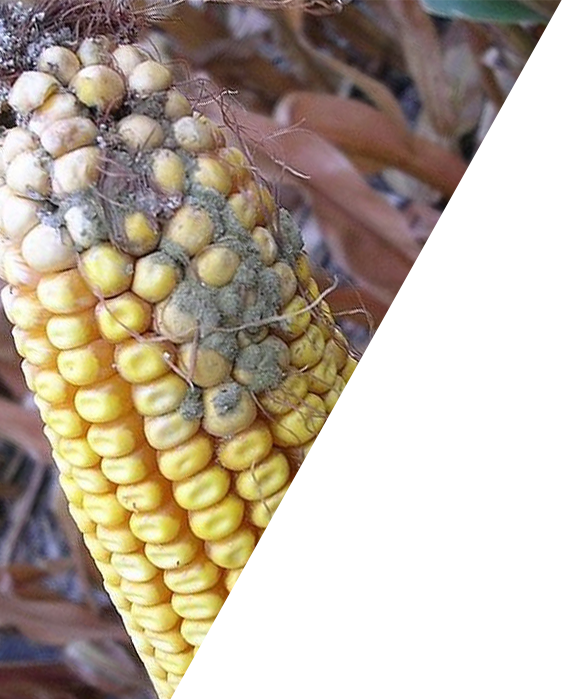



"2019 corn can be fed to livestock, but the risk must be measured"
What's the mycotoxin risk in 2019 corn?
Author: Dr Max Hawkins
The 2019 growing season in the U.S. was, basically, a continuation of 2018: rain and more rain. Planting was delayed, with many acres going unplanted.
The cool and wet growing season also delayed crop maturity. This caused the harvest to be later than usual, exposing the crop in the field to more rain and even snowfall.
The excess rainfall served as a precursor for increased mold growth. These were primarily Fusarium molds, which can produce a variety of Fusarium mycotoxins. These can include trichothecene types A and B, fusaric acid, zearalenone and the emerging mycotoxins, enniatins.
These mycotoxins can cause a variety of health and performance issues in livestock, ranging from loss of feed intake, weight gain, gut and internal organ health, reproduction, milk production, egg production and an increase in secondary health issues.
An analysis of 219 corn samples from across the U.S. conducted by the Alltech 37+ lab shows that 2019 samplescontained, on average, 7.74 mycotoxins per sample, with a range of 0 - 18.
The number of mycotoxins present is crucial, as feeds that contain multiple mycotoxins are a greater risk to performance and health than feeds that contain only one or two. This can be the result of additive effects, but also synergistic effects between the mycotoxins.
Type B trichothecenes (DON) at 90.9% and emerging mycotoxins at 96.3% were the two most common occurring mycotoxin groups in all samples. However, fusaric acid and zearalenone were present in 84.9% and 55.3% of the samples, respectively. Trichothecenes and fusaric acid are typically two of the most common occurring mycotoxin groups in corn and corn products. Interestingly, zearalenone has increased in occurrence and level analyzed over the past two years. This coincides with the two wettest consecutive years over the past 126 years.
The average values of mycotoxins analyzed showed that DON, at 1,294 ppb, and zearalenone, at 156 ppb, were the mycotoxins of concern, on average.
However, maximum levels for type B trichothecenes (33,230 ppb), type A trichothecenes (162 ppb), zearalenone (2,894 ppb), fusaric acid (6,792 ppb), Penicillium (1,689 ppb) and Fumonisin (19,614 ppb) all contain significant risk when fed to livestock and poultry.
Swine show the greatest vulnerability due to their sensitivity to DON and zearalenone. These are high-risk, with impact to feed intake, average daily gain (ADG), reproduction and immune response. Typical inclusion rates of corn create a higher risk for sows, nursery and grow-finish pigs.
Potential risk could cause over a $9.00 loss per pig during the nursery and grow-finish phases. The corn risk to poultry is a higher risk for layers and starters, with broilers at moderate risk, on average. Feeding 2019 corn could result in losses of $0.33 per hen over 63 weeks, and $0.12 per broiler.
The risk in ruminants is higher in calves due to their undeveloped immune systems and rumens.
They will be at high risk for feed intake and ADG. Dairy cows will be at a more moderate risk to rumen function and gut health, while beef cattle will be at a lower risk, due to their tolerance and longer rumen turnover.
2019 corn can be fed to livestock, but the risk must be measured, and a program developed to present the least risk to livestock health and performance.